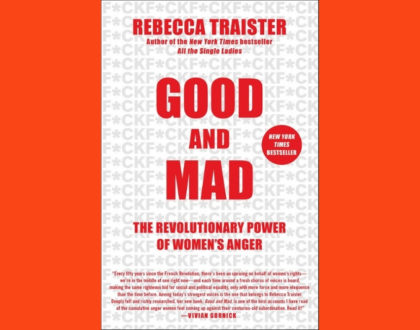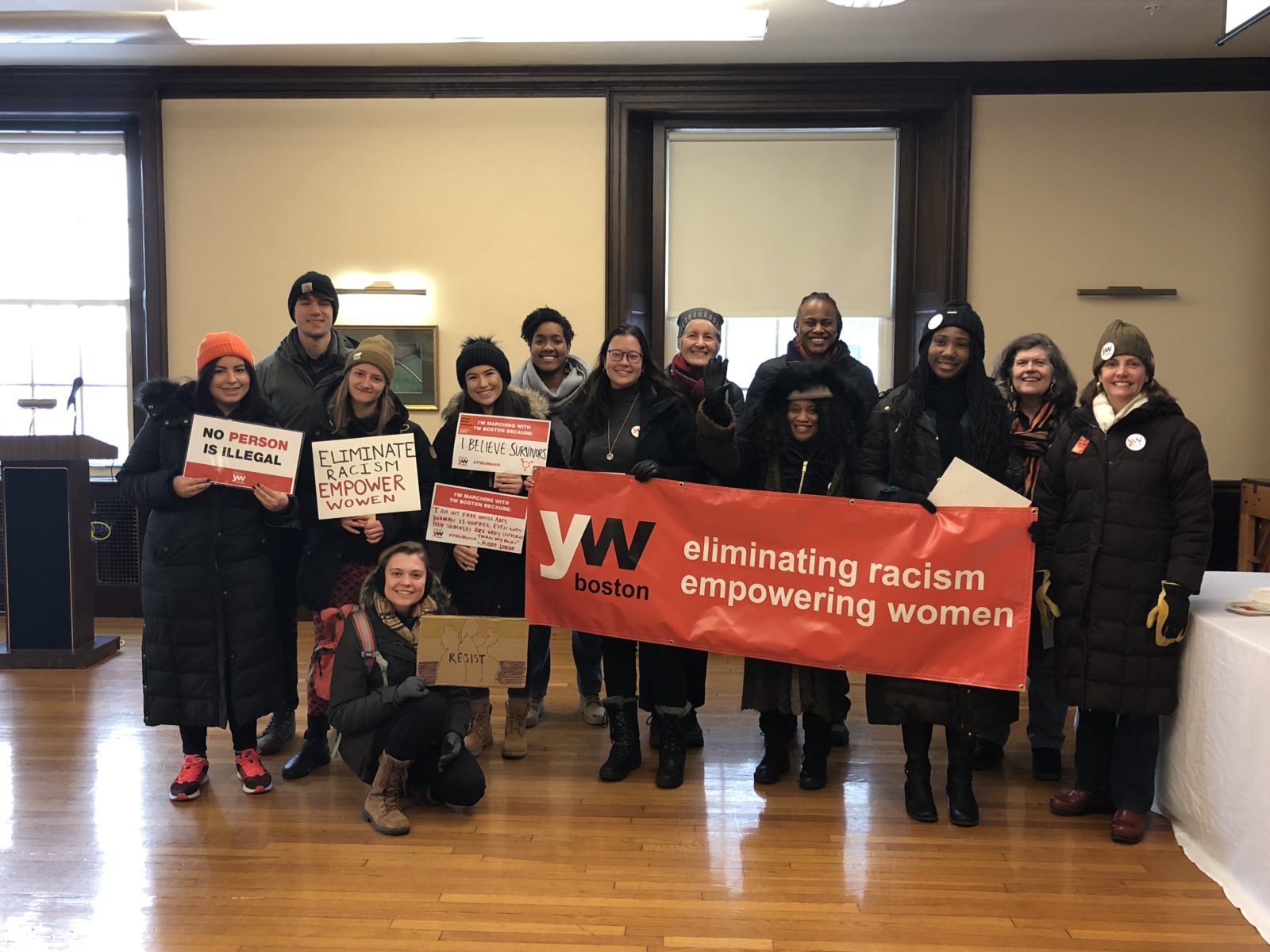Recognizing Women’s Anger: A Review of Good and Mad

Between the now-annual Women’s March, #MeToo, and a number of groundbreaking elections of women into office, women’s anger has begun to make headlines. Women have taken to the streets to protest the racist immigration policies and stormed the United States Capitol building in defense of survivor Christine Blasey-Ford. Many people view this moment as a turning point, and a time in which people are beginning to take women’s anger seriously. Rebecca Traister examines this topic in her book Good and Mad: The Revolutionary Power of Women’s Anger, published in October 2018.
In her book, Traister looks back much further than 2016 to the women whose anger has influenced movements throughout history, such as those who fought for fair-labor practices during the Industrial Revolution and the Black women who led the anti-lynching movement. Women’s anger is not new. There have always been brave women turning anger into political action, but patriarchal forces have derided and suppressed these movements as much as possible. In attempt to maintain control, the powers behind white supremacy and patriarchy have long told women that their anger is unattractive, un-ladylike, and unhealthy. Through Good and Mad, Traister recognizes women who did not let go of their fight.
Unfortunately, these patriarchal myths have also told women that there is not enough justice to go around. Too often in history, activist groups have turned their anger inward, driving wedges and shutting out contingents of their movement. In her book, Traister details the break between the once-united Suffrage, Anti-Slavery, and Labor movements. While “It seemed there was a possibility that the young nation’s majority, people on whose subjugation and labor the country’s economy and political power were being built, might come together,” white women were “livid at having put aside their emphasis on women’s enfranchisement to focus on abolition through the Civil War,” growing even angrier when Black men were granted the right to vote before white women. They feared that there was only so much justice to go around, dolled out sparingly by the white male minority. White suffragists, such as Susan B. Anthony and Elizabeth Cady Stanton, sharply turned against Black activists such as Frederick Douglass and Ida B. Wells. They used their racial and financial privilege to further racist stereotypes, contributing to the roadblocks that prevented Black people from voting for the next century. Black women were forgotten and harmed by the most visible white-led suffragist movement. White women’s financial and familial dependence on white men led to one of the most destructive occurrences of misplaced anger.
Traister goes on to explain the implications of this division on today’s feminist movement – both white women’s misplaced anger at Black women and Black women’s rightful anger for the damage inflicted by their white counterparts. One of the most useful and rich aspects of Good and Mad is the way Traister pulls in forgotten historical context to better help us understand today’s political climate.
One of the most powerful stories within the book is of Mamie Till, the mother of Emmett Till, a 14-year old Black boy who was lynched after having been falsely accused of flirting with a white woman. His death, which became highly visible when Black newspapers published photos of his mutilated body, is widely regarded as having ignited the energy behind the Civil Rights Movement. As Traister explains, Mamie Till is lauded for having insisted on an open-casket funeral, but is often depicted as simply a dutiful, sorrowful mother. What we don’t hear is that when the funeral director refused to open Emmett’s casket, she asked “Do you have a hammer?…[Because] if you can’t open the box, I can, and I’m going in the box,” knowing that she wanted everyone to see his brutalized body. Her anger was a crucial, catalytic force for the Civil Rights Movement — a fact often gleaned by historians.
As Traister explains, women are more likely to be viewed and to view themselves as sad, not angry. After the 2016 election, many women told her they were sad, or that their anger had subsided to be replaced with sadness. They shunned their own anger because it felt un-feminine or unjust. By characterizing anger this way, the patriarchy has worked to prevent women from recognizing their own political power.
Women are often told to suppress their anger for health and wellness benefits, such as not grinding their teeth or raising their blood pressure. While writing Good and Mad, Traister realized she never felt more alive or more healthy, because for the first time she was able to fully recognize her own anger and the anger of the women around her. She advises readers to be wary of these wellness claims. How she sees it, “what is bad for women, when it comes to anger, are the messages that cause us to bottle it up, let it fester, keep it silent, feel shame and isolation for ever having felt it or rechannel it in inappropriate directions. What is good for us is opening our mouths and letting it out, permitting ourselves to feel it and say it and think it and act on it and integrate it into our lives, just as we integrate joy and sadness and worry and optimism…the system that mocks or ignores it. That’s what’s making us sick.”
Finally, women are beginning to talk about their anger despite patriarchal repercussions, and in doing so, they normalize these reactions. Once they recognize this anger and the anger of the women in their community, women can channel it into action through discussion groups, political advocacy, self-efficacy, and more.
Still, as Traister notes, many women don’t have the ability to show their anger as she has, for “We live in a world in which a black woman, angry at being pulled over for no reasons, risks arrest, and a woman angry at being unjustly arrested risks death.” Women of all different intersecting identities will be policed differently when they express their anger, sometimes with life-threatening risks. We can change this system “by acknowledging, paying attention to, respecting, and not shying away from other women’s anger” and working together to create a world where women can express their anger and work toward solutions. Validating and upholding the anger of women with less relative power and privilege will create a world where all women can be angry and heard.
Alongside Good and Mad, there has been Soraya Chemaly’s recent release Rage Becomes Her, Brittney Cooper’s Eloquent Rage, Elle.com’s column “Fired Up!,” Bitch Media’s “The Future is Furious” series, and the now-annual Women’s March. In the last two years, women have created many avenues to understand and engage with their anger. By engaging with these avenues, women have as strong an opportunity as ever to turn their collective anger into action. As Traister explains, “The desire to push disruptive social fury back down underground is strong. The rage must be stronger still, to resist the pull of apathy, the censure of the powerful…The task–especially for the newly awakened, the newly angry…is to keep going, to not turn back.”
Find Good and Mad at a local bookstore near you.

YW Boston staff and supporters before the 2019 Women’s March.
